Blog five in a series documenting China’s path to urbanising Tibet, depopulating the highlands, converting exnomads into infrastructure construction workers 5/5
WORKING FOR THE HAN MAN
The most favoured construction corporations in Tibet build the highways, airports, railways, bridges, hydro dams. Wherever concrete and steel are needed, they are there. They also build cities, such as the entire city block occupied by the Lhasa Municipal Government, proudly built by Tibet Construction Engineering Building Materials Group, and featured on their splash page.
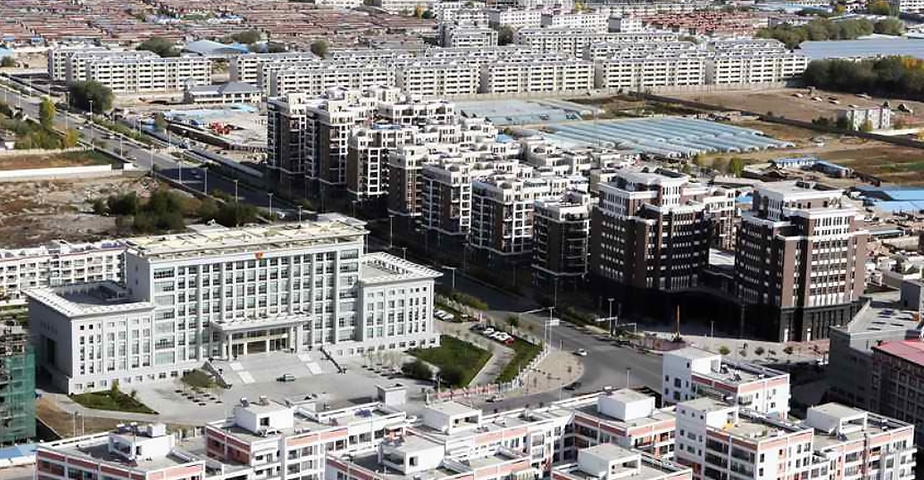
All of the construction corporations based in Tibet Autonomous Region are now proliferating subsidiaries to financialise their wealth, to make their money work harder than ever. Before branching out into banking, lending, securities and the whole gamut of financialisation, how did these companies first make their fortunes?
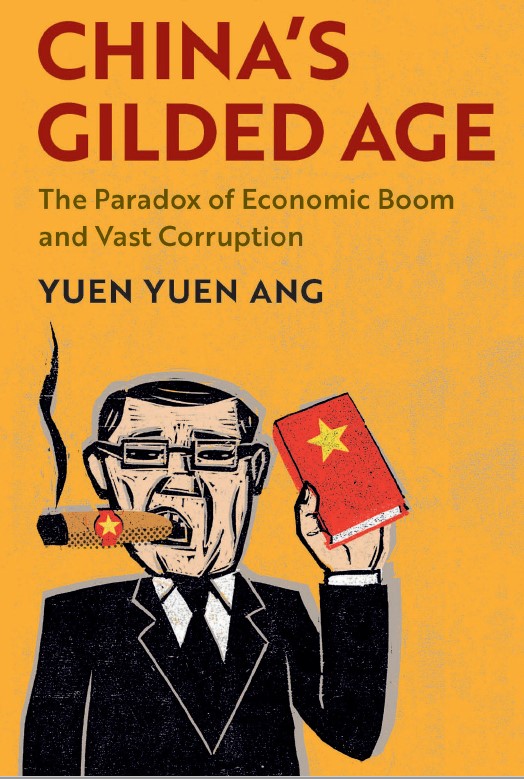
All were in prime position to profit from real estate. “Although land cannot be sold, local governments can lease time-limited rights for “land transfer fees” that go directly to local coffers. Nationwide, land-related proceeds ballooned from 51 billion Yuan in 1999 to an estimated 3.2 trillion Yuan in 2012. This spawned an extremely lucrative market in real estate, where developers readily offered officeholders large kickbacks in exchange for prized parcels of land. Although the physical expanse of Chinese infrastructure is dazzling, the way it was financed is deeply troubling. Funds for these projects were funneled through a proliferation of non-transparent “investment vehicles” (rongzi pingtai), shell companies set up by local governments and agencies to borrow loans.”[1]
The municipalisation of first Lhasa prefecture, then Shigatse and Shannan (Lhoka), contributed greatly to this real estate bonanza. Municipal governments had the power to commandeer farmland at rural prices, pass it on to their state owned construction companies to build urban infrastructure and profit enormously from the jump in land value.
China may be entering a new era, but the entrenched older ways of concentrating wealth in a few hands persist. Pushing rural Tibetans off their pastures and into peri-urban villages may further concentrate those concentrated rich lists. Villagisation and municipalisation go together.[2] Villagisation gets rural Tibetans off their lands and into the construction workforce, while municipalisation gets land into the hands of real estate companies who then employ exnomads as casual construction labourers.
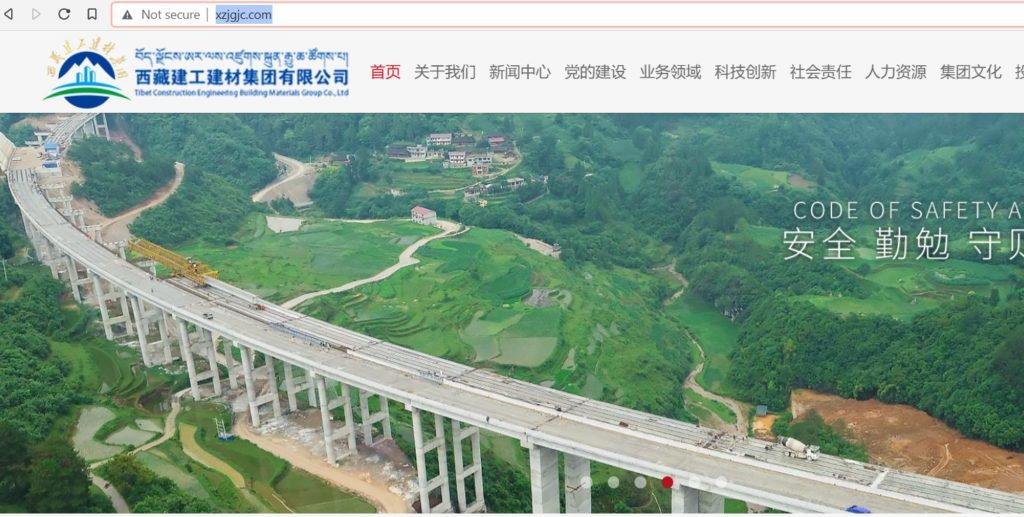
Villagisation is state power concentrating rural folk into strategic hamlets, for strategic purposes. It relies on compulsion and, if necessary force; the opposite of the free flows of labour and other factors of production of the neoliberal ideal, where the invisible hand of the market brings all factors together at the sweet spot of convergence.
China’s rise to prosperity and wealth concentration is based on that neoliberal model of free flow, yet it also relies on coercion and compulsion, first by displacing nomads from their pastures, then by enrolling them in construction industry skills training.
China manages to be both neoliberal and dirigiste, full of Five-Year Plans that talk of the “decisive” role of markets. China’s state capitalism is crony capitalism, guaranteeing in advance that the contracts go to a named list of contractors. China’s highly publicised crackdowns on corruption may have eliminated rivals within the party, but have not at all eliminated corruption. Contradictions abound.
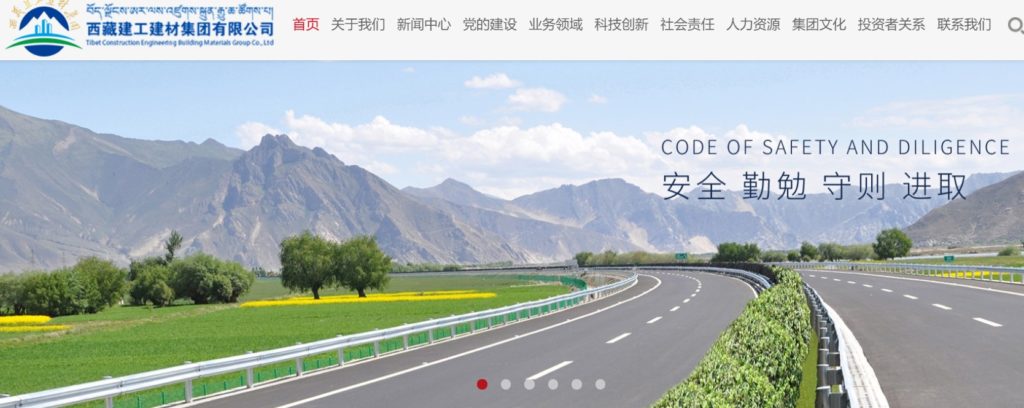
ACCUMULATING WEALTH, CONCENTRATING WEALTH
Does this mean the fast growing cities of Tibet will be populated by Tibetans? Do the Tibetan construction workers who build the cities have the right to stay in the cities they build?
Across China, one of the most powerful ways of maintaining the concentration of wealth is the ongoing disempowerment of migrant workers, due to the hukou household registration system. Anyone born in the countryside is permanently registered as residing there, not in a town or city, and may be employed in urban construction work only as a migrant worker, who must leave if work runs out, and may not bring family to town, since rural hukou registration entitles your children only to schooling in the home rural area, likewise elderly parents can’t obtain health care in town, only in their registered hukou district. Hukou splits families. Hukou is cruel. Hukou perpetuates inequality.
For decades, economists have urged China to abandon the hukou system, yet it persists. It does get tweaked. Several years ago, emigrant workers coming to Tibet from other provinces were explicitly permitted to change to a TAR hukou, and then change back when they returned to their home province. Tibetans have nothing like such flexibility.
More recently, after so many years of pressure, central leaders announced rural migrants may, at last, be allowed to apply for urban hukou, but only in cities under three million population. The bigger cities can continue to regard rural migrants with contempt.
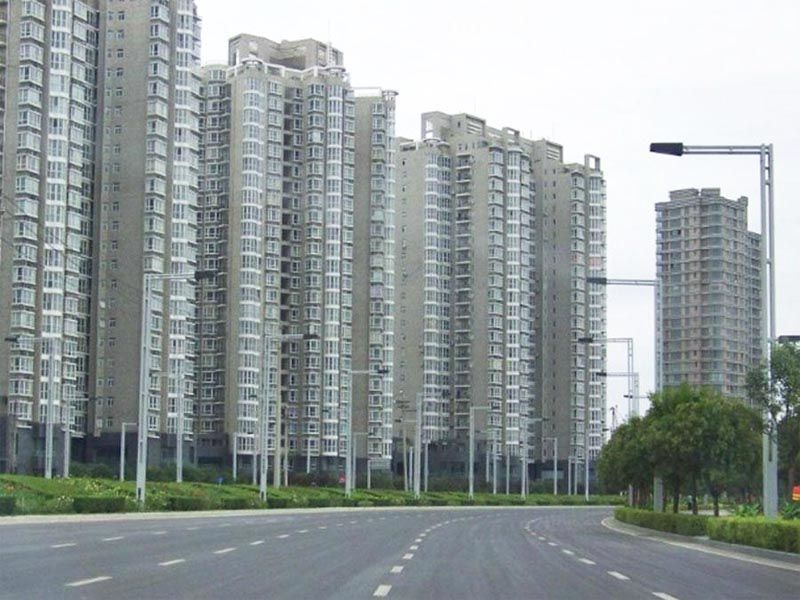
POPULATING THE GROWING CITIES OF CENTRAL TIBET
If urban construction in Tibet takes off, as planned, catching up with the rate of construction almost everywhere else in China, who will live in these growing cities targeted in the 14th Plan: Lhasa, Shigatse and Tsethang, the city of Lhoka/Shannan? Will Tibetans live in the apartment tower blocks they built? Will migrants flood in? Will mass domestic tourism expand, as planned, attracting many more Han settlers doing hospitality work?
The 14th Plan runs through 2025. Even if the Plan materialises, it will take time before there is a mass mobilisation of rural Tibetans, trained in urban construction skills. In the short-term, there is no clear answer to these questions; Tibetans are not being bundled en masse off the streets and into internment camps, as in Xinjiang. Yet the acceleration of Tibet is the clear trend, with plenty of Beijing finance to ensure the planned infrastructure is built. Beijing’s return on investment may be diminishing, but, as usual, political fears of security threats outweigh economic rationality.
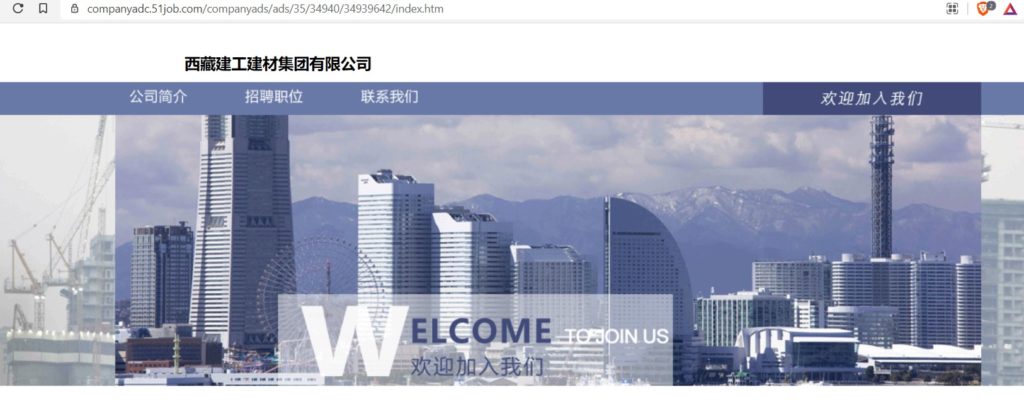
On official figures, the 2019 population of Lhasa Municipality was 721,000, up from 475,000 20 years earlier; Shigatse Municipality 800,000, up from 635,000 in 2000; and Lhoka/Shannan 383,000, up from 318,000.[3] These numbers do not include the military garrisons, or the “floating population” of migrants. According to the 2020 TAR Statistical Yearbook the total population was 3.5 million, with a birth rate of 14.6 babies born each year per 1000 people, down from 26 in 1990, a decline in birth rate similar to the worldwide trend of demographic transition.
The three cities named as highest priority growth targets in the TAR 14th Plan are the three cities of southern Tibet closest to the borders with India, Nepal and Bhutan. The two adjacent municipalities (formerly prefectures) of Shigatse and Shannan (Lhoka) are front and centre of China’s southern flank facing South Asia They are now hubs of a new growth zone in TAR.

AN ARCHIPELAGO OF BORDER SECURITY VILLAGES
A major driver of the intensification of construction is the border with South Asian countries. China has been moving troops, weapons and supporting logistics to border districts, implanting high altitude facilities ready for power projection and conflict, at many points along the Himalayan border. This has been much publicised.
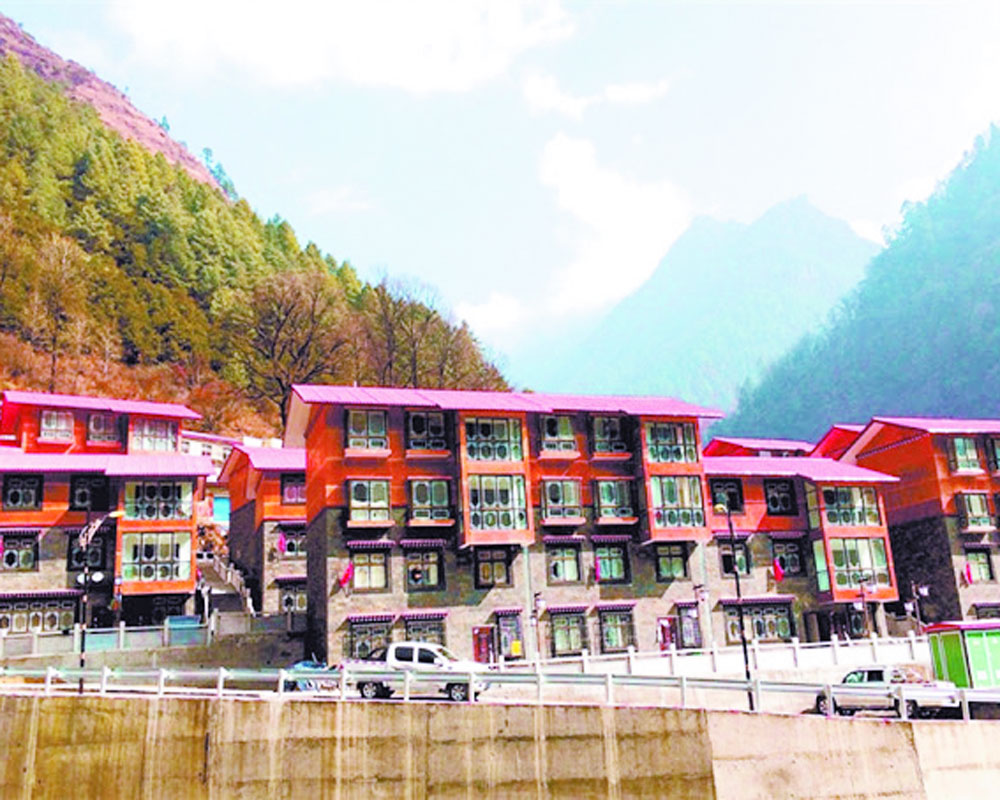
Less publicity has focussed on the fast construction of model border villages, designed to impress the neglected pahari hill folk across the borders in the Indian, Nepalese and Bhutanese Himalayas.
The new border villages are at high altitude, sometimes snowed in, enduring long, cold winters. China’s strategy is to standardise construction as much as possible, relying on prefabricated panels that can be quickly bolted together, rather than slow and labour-intensive timber frames, or traditional stone houses.
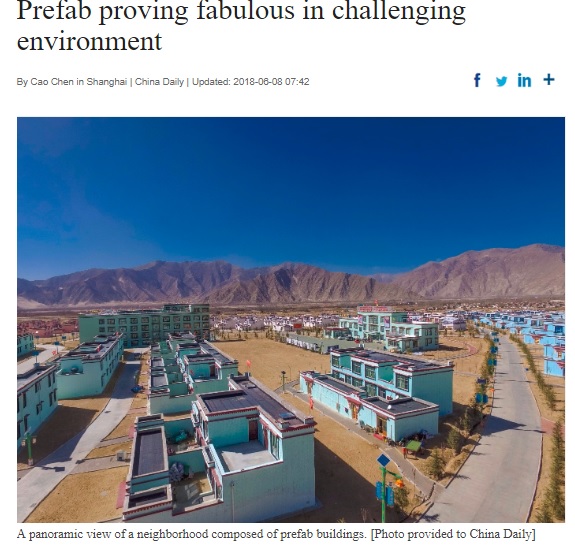
Production and distribution of prefab kits requires logistic hubs able to get gear to site reliably, along a lengthy border.. Of the 3488 kms of the India-China border, roughly half is in these two municipalities, plus the entire 1389 kms of China-Nepal border, and the 477 kms of China-Bhutan border. Altogether, over 3000 kms of border fringing Shigatse and Lhoka.
If that length is to be populated with exemplary modern border villages that excite longing and envy among all who see them, that’s a lot of construction to be done in a hurry, in the short seasonal window, at altitude. Prefab is the solution.
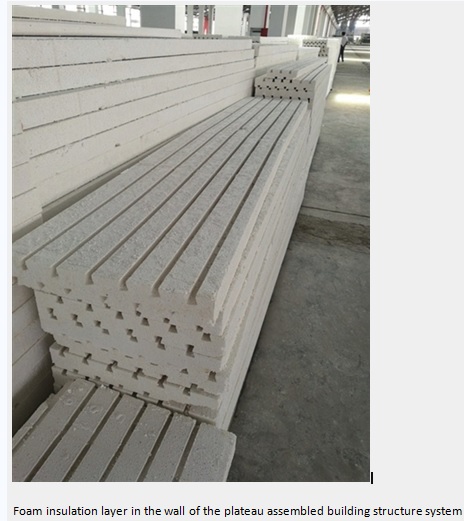
Hauling concrete panels great distances, over second class roads, is heavy work requiring a lot of fuel. Reducing the weight of the panels without losing the strength of concrete reinforced with steel rebar can be done, by forcing bubbles into the wet concrete. Those bubbles have to hold their place while the concrete sets hard, so the bubbles need special characteristics. The technology of bubbling concrete relies on a byproduct of an industry China is keen to intensify in Tibet, the slaughter of yaks, sheep and goats in centralised abattoirs located in “livestock industry demonstration parks” China is building in many Tibetan areas, usually with a livestock fattening feedlot attached.
Industrial scale slaughter produces lots of blood, which has few uses in modern agribusiness, but is the raw material for chemical processing to bubble concrete and make lightweight panels suitable for longhaul transport.
WHAT NOW?
Taken together, China’s latest announced interventions in TAR add up to several paradoxes.
If, as the State Council’s 2021 White Paper on Tibet announces, border areas adjacent to the Himalayan societies of South Asia are to be depopulated, and made into a chain of border security villages, who will live in those villages?
If, as the TAR 14th Five-Year Plan says, all areas above the 4800m contour line are being rapidly depopulated, does this leave upper Tibet a free fire zone for the military’s war games? In addition to the Chang Tang in the north, officially dedicated now to wildlife, lacking all human presence, south of the Chang Tang is a huge area bordering India Ladakh, where most of the recent China-India border clashes have occurred. The Tibetans of the entire prefecture of Ngari (Ali in Chinese) will be removed to lower altitudes and closer proximity to growing urban centres, plus the huge westernmost county of Shigatse “municipality”, which remains part of the border security village construction program.
It could be that White Papers, despite sounding authoritative, don’t mean much; and that the 14th Five-Year Plan is full of targets, which will not materialise. Plenty of previous Five-Year Plans, full of promises to create “pillar industries” in Tibet fell far short.
If, as planned, the TAR population is being concentrated into a much smaller area, does this mean they will now fill the fast-growing cities of TAR? Or will accelerated urbanisation attract settlers from lowland provinces? That needs much more investigation.
Until now, the steady displacement of rural Tibetans has culminated in settlement on urban fringes, in straight line villages of concrete boxes, with little for the relocated to do, their subsistence supported by officially issued rations. As such settlements have proliferated, on the outskirts of so many towns across the Tibetan Plateau, sometimes going vertical, into apartment towers with even less space for livestock producers to keep any animals at all, there has been much criticism. Transitioning Tibetans from useful to useless is not progress.
In recent years, peri-urban settlements came with vague official language about vocational education, but in reality these Tibetans were simply parked someplace, surplus to requirements, with no way back to their lands, and no way forward into new modes of production and income. They have been, in every sense, peripheral, their old life cancelled, with no new life path ahead. Wasted lives.
Now China, perhaps in response to those critiques, announces it has a plan to mobilise the displaced, some now employed by the state as national park rangers enforcing further ongoing displacements; many more mobilised into the urban construction industry.
While China’s plans for TAR require concrete all over the place, in bridges, tunnels, rail tracks, highways, tollroads, power grid footings, hydro dams, they all head into cities. The infrastructure being built across Tibet is a network of commodity flows that ensure growing cities get the electricity, water and transport connections they need in order to grow, as cities. So the core paradox, if the cities of Ȗ-Tsang southern Tibet do, as planned, grow fast, is who will populate those cities?
Will the displaced Tibetans parked on urban fringes become city folk, with urban hukou registration? Will the cities grow outward to envelop the current line villages on the outskirts? Or is there a real likelihood that the cities will fill with emigrant Han, drawn by tourism industry opportunities to get rich?
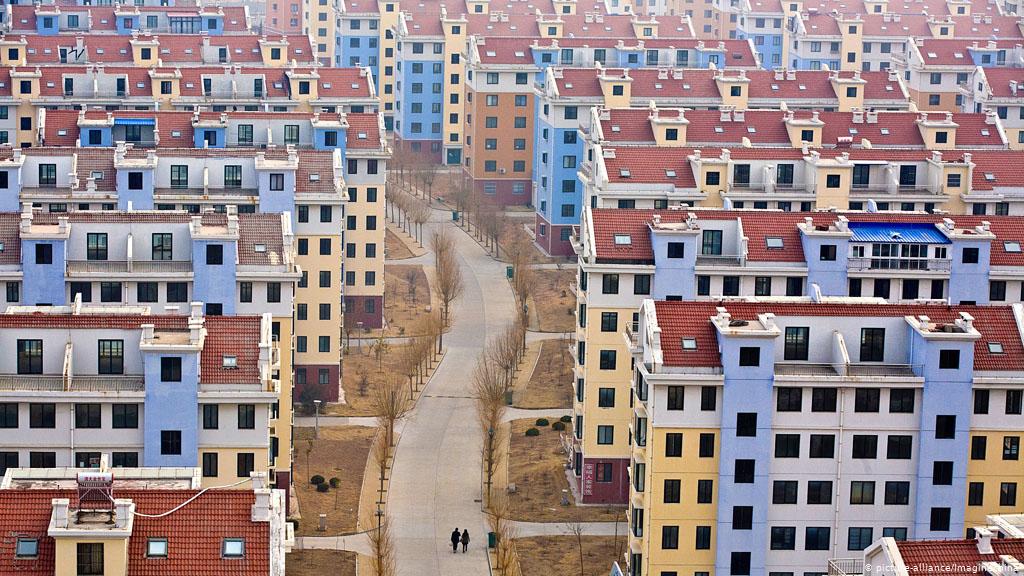
There is also the possibility that, as commanded and financed by Beijing, expanded cities will be built, endless blocks of apartment towers, that stand empty. Such ghost towns have been built all over China, and attracted much attention. Yet, over time, most of those ghost towns did fill, as families decided to emigrate, in the hope of new opportunities. Build it and they will come, as real estate speculators have long said. The state-led developmentalists model pays state owned construction companies to build those concrete apartment blocks as external skins lacking fittings and internal walls, which are up to each apartment buyer to complete.
This is a quite unsatisfactory way to end a long blog, with more questions than we began with.
We can, however, be confident that the worst fears of the Tibetan diaspora are not about to come true. “Population transfer” of millions of Han shipped to Tibet has always been the great fear, as if China could readily shunt masses to the frontiers, and make them stay. That did not happen in Ȗ-Tsang, despite official attempts at setting up intensive state farms, and growing crops suited to concentrated production.
Mass population transfer to TAR didn’t happen when China was poor and people were motivated to start afresh, because altitude, climate and frigidity ruled out peasant production with Chinese characteristics. Now that China is much richer, there are few Han yearning to live in Tibet, which is like a foreign country to them, in every way, starting with every breath of thin air.
Given the way China populated Xinjiang with many millions of Han, and the older history of making Sichuan and Yunnan Chinese, the fear of population transfer was grounded in reality; yet in TAR it failed.
However, China current plans for new airports, hotels, tourist attractions and tour circuits that make all of TAR, from Kailash in the far west to Chamdo and Nyingtri in eastern TAR, do suggest a huge expansion in tourism is coming. That’s for a future blog.
This long blogroll sheds light on a debate triggered in September 2020 likening Tibet to Xinjiang, focussing on clearances of rural folk from their land, and into state programs of labour mobilisation. That debate has been intense, yet missed delving into key Chinese documents that reveal China’s actual plans.
What is clear from a close look at the TAR 14th Five-Year Plan 2021 to 2025, the 2021 State Council White Paper on Tibet and the 2021 TAR construction workforce policy is that:
- Tibet is not Xinjiang, However, Tibetans and Uighurs alike are objects of Han racist contempt, discrimination and punishment for resisting assimilation.
- China has serious intentions of accelerating urban construction throughout central Tibet, Ȗ-Tsang, by villagising large numbers of nomads away from their pastures and into urban construction training and employment.
- In Xinjiang the pace of compulsory assimilation is top speed, reliant on coercion and violence. In Tibet assimilation is also the goal, but the strategy is a combination of coercion and incentivisation. China sees both nationalities as backward tribes who inexplicably resist the obvious magnificence of Chinese civilisation and the superiority of the Chinese Communist Party.
- Because the pace of coercive assimilation is slower, reliant on pull as well as push, there is time to alert the world, and to alert Tibetans who may be tempted by utopian get-rich promises to abandon customary connections and get in to the construction industry.
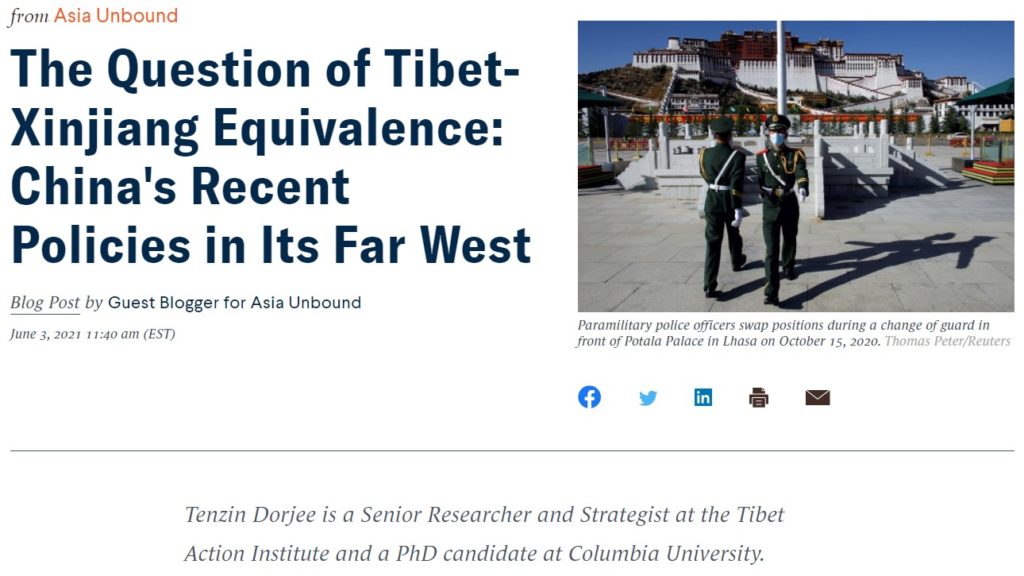
[1] Yuen Yuen Ang, China’s Gilded Age: The Paradox of Economic Boom and Vast Corruption, Cambridge University Press, 2020, 62
[2] Logan A. Hennessy. Re-Placing Indigenous Territory: Villagization and the Transformation of Amerindian Environments Under “Cooperative Socialism” in Guyana, Annals of the Association of American Geographers.2013, 103(5):1242-1265;
Castela Tiago, The Production Of Colonial Space In State Theory : Portugal’s Wartime Villagization, 1961–1974, Traditional Dwellings and Settlements Review.2018, 30(1):64-65; International Association for the Study of Traditional Environments (IASTE)
[3] TAR Statistical Yearbook 2020, table 3-3

